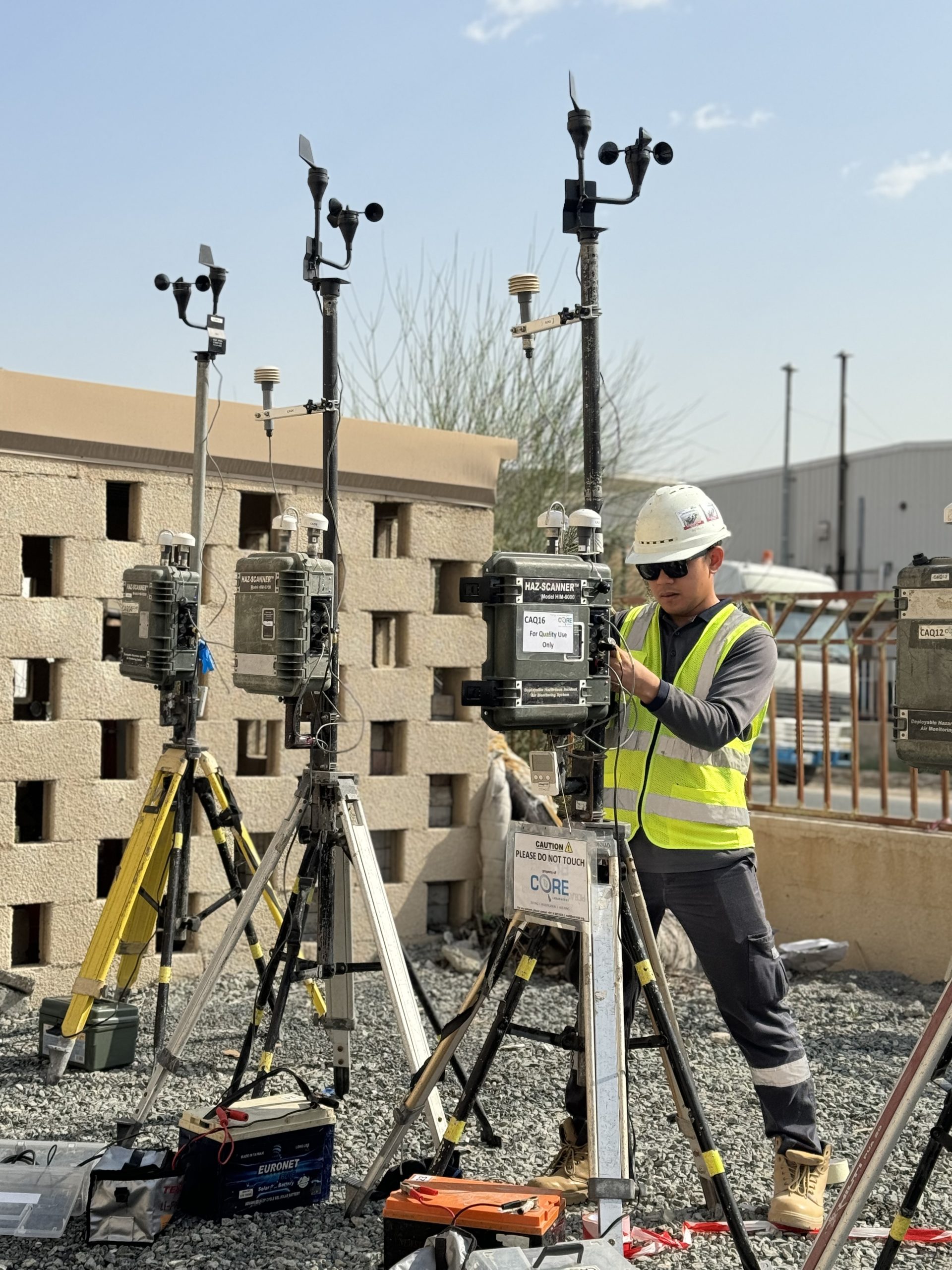
AMBIENT AIR QUALITY MONITORING
Ambient air monitoring is the systematic, long-term assessment of pollutant levels by measuring the quantity and types of certain pollutants in the surrounding, outdoor air.
The EPA has set National Ambient Air Quality Standards for six principal pollutants, which are called “criteria” air pollutants and are as follows:
- Carbon Monoxide (CO)
- Nitrogen Dioxide (NO2)
- Sulfur Dioxide (SO2)
- Ozone (O3)
- Particulate Matter (PM)
- Lead (Pb)
CORE Laboratory maintains a number of instruments and devices to monitor ambient air that consists of the following constituents:
- Particulate Matter (TSP, PM10, PM2.5 & PM1.0)
- Carbon Monoxide (CO)
- Nitrogen Dioxide (NO2)
- Ozone (O3)
- Volatile Organic Compounds (VOCs)
- Meteorological Data is also collected which may include wind speed, wind direction, ambient temperature, and relative humidity.
- Ammonia (NH3)
- Hydrogen Sulphide (H2S)
- Hydrogen Fluoride (HF)
- Heavy metals
- BTEX
- Methane (CH4)
Common Sources of Ambient Air Pollution
- Traffic pollution
- Landfill gas emissions
- Agricultural emissions
- Industrial emissions – Stack sampling and boundary emissions monitoring.
Importance of Ambient Air Quality
Air pollution can compromise human health and the environment in many ways. Outdoor air pollution:
- Is associated with a number of human health effects including heart attacks, asthma attacks, bronchitis, hospital and emergency room visits, work and school days lost, restricted activity days, respiratory symptoms, and premature mortality.
- Can contribute to “acid rain.”
- Can impair visibility and damage crops and surfaces of treasured buildings and monuments.
- Can diminish the protective ozone layer in the upper atmosphere.
Reducing Air Pollution
Maintaining clean air is a challenging but achievable task, some successful policies are as follows:
- For industry: clean technologies that reduce industrial smokestack emissions, improved management of urban and agricultural waste, including capture of methane gas emitted from waste sites as an alternative to incineration (for use as biogas).
- For transport: shifting to clean modes of power generation, prioritizing rapid urban transit, walking and cycling networks in cities as well as rail interurban freight and passenger travel, shifting to cleaner heavy duty diesel vehicles and low-emissions vehicles and fuels, including fuels with reduced sulfur content.
- For urban planning: improving the energy efficiency of buildings and making cities more compact, and thus energy efficient.
- For power generation: increase use of low-emissions fuels and renewable combustion-free power sources (like solar, wind or hydropower), co-generation heat and power, and distributed energy generation (e.g. mini-grids and rooftop solar power generation).
- For municipal and agricultural waste management: strategies for waste reduction, waste separation, recycling and reuse or waste reprocessing, as well as improved methods of biological waste management such as anaerobic waste digestion to produce biogas, are feasible, low-cost alternatives to the open incineration of solid waste. Where incineration is unavoidable, combustion technologies with strict emission controls are critical.

